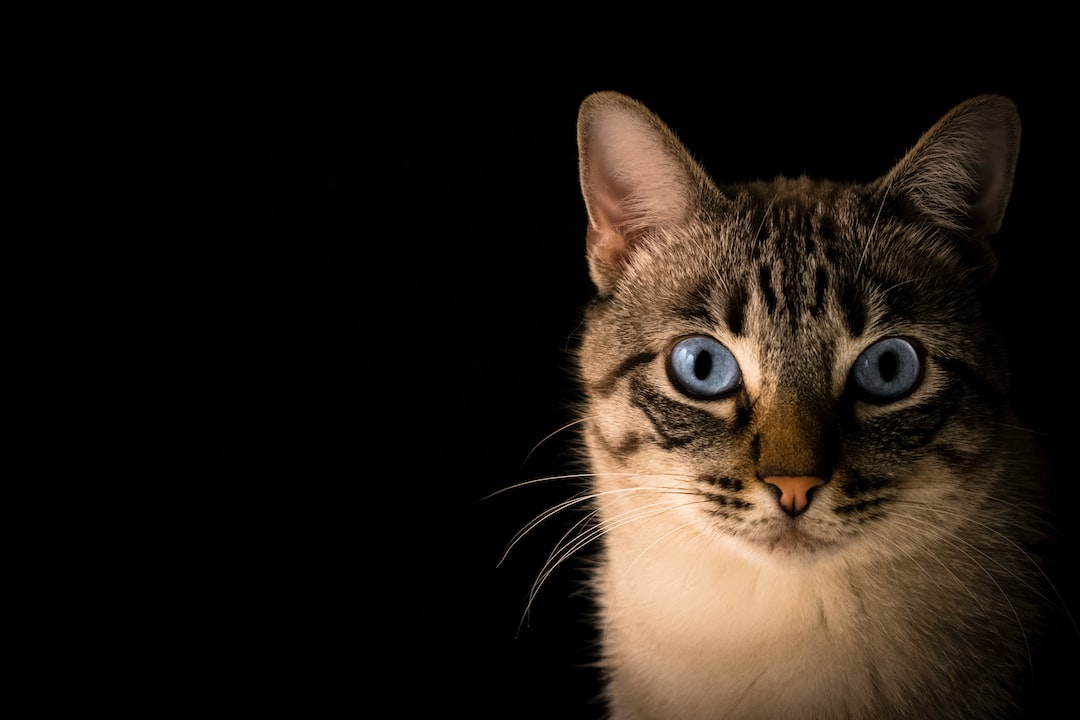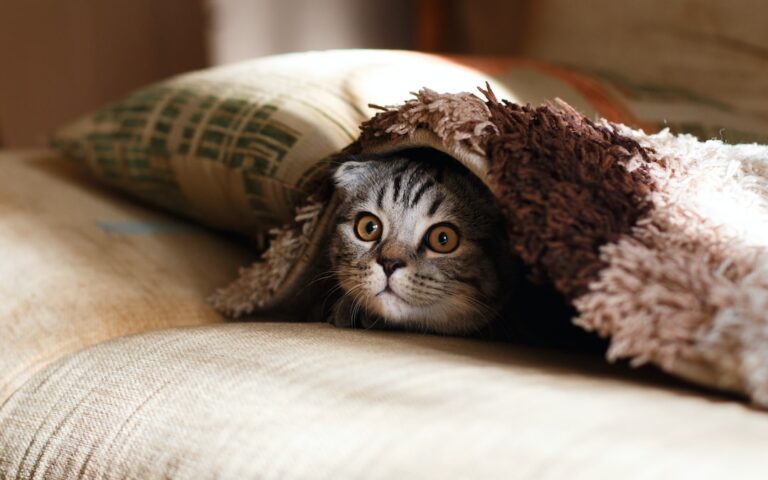Introduction
Understanding cat behavior is crucial for cat owners in order to provide the best care and create a harmonious relationship with their feline friends. Cats have unique behaviors and communication methods that can sometimes be misunderstood or misinterpreted. By gaining a deeper understanding of cat behavior, owners can address any behavior problems, create a cat-friendly environment, and build a strong bond with their cats. In this article, we will explore the importance of understanding cat behavior and provide tips and insights from a Clearwater cat behaviorist.
Understanding Your Feline Friend: The Importance of Cat Behavior
Understanding cat behavior is essential for several reasons. Firstly, it allows cat owners to provide the best care for their feline friends. By understanding their behavior, owners can ensure that their cats are happy, healthy, and have all their needs met. Secondly, understanding cat behavior helps in addressing any behavior problems that may arise. By identifying the root cause of the problem, owners can implement appropriate solutions and prevent the issue from escalating. Lastly, understanding cat behavior helps in building a strong bond and communication with cats. By recognizing their body language and behaviors, owners can better understand what their cats are trying to communicate.
Cats have unique behaviors that are influenced by their instincts and natural tendencies. They are solitary animals by nature, and their behaviors are often driven by their need for independence and territory. Cats are also highly sensitive to their environment and can be easily stressed by changes or disruptions. Understanding these basic behaviors can help owners create a cat-friendly environment and prevent any behavior problems from arising.
The Role of a Clearwater Cat Behaviorist in Solving Feline Mysteries
A cat behaviorist is a professional who specializes in understanding and addressing cat behavior problems. They have in-depth knowledge and experience in feline behavior and can provide valuable insights and solutions for cat owners. A cat behaviorist can help solve behavior problems by conducting a thorough assessment of the cat’s environment, health, and behavior. They can identify any underlying issues or triggers that may be causing the problem and provide appropriate recommendations and strategies to address them.
A cat behaviorist can also provide guidance and support to cat owners in implementing behavior modification techniques. They can teach owners how to effectively communicate with their cats, set boundaries, and reinforce positive behaviors. Additionally, a cat behaviorist can provide advice on creating a cat-friendly home and environment, as well as tips for training and enrichment activities.
Common Feline Behavior Problems and How to Address Them
There are several common behavior problems that cats may exhibit, and understanding the underlying causes is crucial in addressing them effectively. Some common behavior problems include litter box issues, aggression, scratching furniture, excessive meowing, and destructive behavior. These problems can be caused by various factors such as stress, anxiety, medical issues, or lack of proper training and socialization.
To address litter box issues, it is important to ensure that the litter box is clean, easily accessible, and in a quiet location. Providing multiple litter boxes in different areas of the house can also help. If a cat is exhibiting aggression, it is important to identify the triggers and provide appropriate outlets for their energy, such as interactive toys or play sessions. Scratching furniture can be addressed by providing appropriate scratching posts and redirecting the cat’s behavior to those areas. Excessive meowing can be a sign of attention-seeking or stress, and providing mental and physical stimulation can help alleviate this behavior. Destructive behavior can be addressed by providing appropriate outlets for the cat’s energy, such as interactive toys and play sessions, as well as ensuring that the cat has a stimulating environment.
The Science of Cat Communication: Decoding Your Cat’s Body Language
Cat communication is primarily done through body language, and understanding these cues can help cat owners better understand their cats. Some common body language cues include tail position, ear position, vocalizations, and facial expressions. A relaxed and upright tail indicates a content and confident cat, while a tucked tail indicates fear or anxiety. Ears that are forward and relaxed indicate a calm cat, while flattened ears indicate aggression or fear. Vocalizations such as purring, meowing, or hissing can also convey different messages. Facial expressions, such as dilated pupils or a relaxed face, can also indicate the cat’s emotional state.
By observing and understanding these body language cues, cat owners can better understand what their cats are trying to communicate. This can help in identifying any stress or discomfort and addressing it appropriately.
The Impact of Environment on Feline Behavior: Creating a Cat-Friendly Home
The environment plays a significant role in a cat’s behavior and well-being. Cats are highly sensitive to changes in their environment and can easily become stressed or anxious. Creating a cat-friendly home is essential in providing a safe and comfortable space for cats. Some tips for creating a cat-friendly environment include providing vertical spaces such as cat trees or shelves, providing hiding spots or cozy beds, and ensuring that there are plenty of scratching posts and toys available. It is also important to provide a quiet and peaceful space for cats to retreat to when they need some alone time.
Additionally, maintaining a consistent routine and minimizing any disruptions or changes in the environment can help reduce stress and anxiety in cats. Providing mental and physical stimulation through interactive toys, puzzle feeders, and play sessions can also help keep cats engaged and prevent boredom.
The Connection Between Diet and Behavior: How Nutrition Affects Your Cat
Diet plays a crucial role in a cat’s overall health and behavior. A balanced and nutritious diet is essential for a cat’s physical and mental well-being. Poor nutrition can lead to various health issues, including obesity, digestive problems, and skin conditions, which can in turn affect a cat’s behavior.
Feeding a high-quality, species-appropriate diet that is rich in protein and low in carbohydrates is important for maintaining a cat’s health and behavior. Cats are obligate carnivores, which means they require a diet that is primarily made up of animal protein. Providing a diet that meets their nutritional needs can help prevent any deficiencies or imbalances that may contribute to behavior problems.
The Benefits of Positive Reinforcement Training for Cats
Positive reinforcement training is a highly effective and humane method of training cats. It involves rewarding desired behaviors with treats, praise, or play, while ignoring or redirecting unwanted behaviors. Positive reinforcement training helps build a strong bond between the cat and the owner, as it focuses on rewarding and reinforcing positive behaviors rather than punishing or scaring the cat.
Training cats using positive reinforcement can help address behavior problems, teach basic commands and tricks, and provide mental stimulation. It can also help in creating a harmonious and cooperative relationship between the cat and the owner.
The Importance of Playtime: Keeping Your Cat Mentally and Physically Stimulated
Playtime is essential for a cat’s mental and physical well-being. Cats are natural hunters and need opportunities to engage in hunting-like behaviors. Playtime provides an outlet for their energy, helps prevent boredom, and keeps them mentally and physically stimulated.
Interactive toys, such as wand toys or puzzle feeders, can help simulate hunting behaviors and provide mental stimulation. Regular play sessions with the owner can also help strengthen the bond between the cat and the owner. It is important to provide a variety of toys and rotate them regularly to keep the cat engaged and prevent boredom.
The Role of Medical Issues in Feline Behavior: When to Consult a Veterinarian
Medical issues can have a significant impact on a cat’s behavior. Cats may exhibit behavior changes or problems as a result of underlying medical conditions. It is important to consult a veterinarian if a cat’s behavior suddenly changes or if there are any concerns about their health or well-being.
Some medical issues that can affect a cat’s behavior include urinary tract infections, dental problems, thyroid issues, or pain from injuries or arthritis. A veterinarian can conduct a thorough examination and run any necessary tests to identify and address any underlying medical issues. Treating the medical issue can often resolve the behavior problem or improve the cat’s behavior.
Building a Strong Relationship with Your Cat: Tips from a Clearwater Cat Behaviorist
Building a strong relationship with your cat is essential for their well-being and happiness. Some tips for building a strong relationship with your cat include spending quality time together, providing positive reinforcement and rewards, respecting their boundaries, and being patient and understanding. It is important to create a safe and trusting environment for your cat and to communicate with them using positive reinforcement and gentle handling.
By building a strong relationship with your cat, you can create a bond based on trust and mutual respect. This can help in addressing any behavior problems, as well as providing a loving and nurturing environment for your feline friend.
Conclusion
Understanding cat behavior is crucial for cat owners in order to provide the best care and create a harmonious relationship with their feline friends. By understanding their behavior, owners can address any behavior problems, create a cat-friendly environment, and build a strong bond with their cats. Consulting a cat behaviorist can provide valuable insights and solutions for behavior problems, as well as guidance on creating a cat-friendly home and environment. By implementing the tips and strategies discussed in this article, cat owners can ensure that their cats are happy, healthy, and well-behaved.
If you’re interested in understanding your cat’s behavior better, you may also want to check out this insightful article on cat adoption in the Tampa Bay area. It provides valuable information on finding the right feline companion for your home and offers tips on creating a harmonious environment for your new furry friend. Read more




